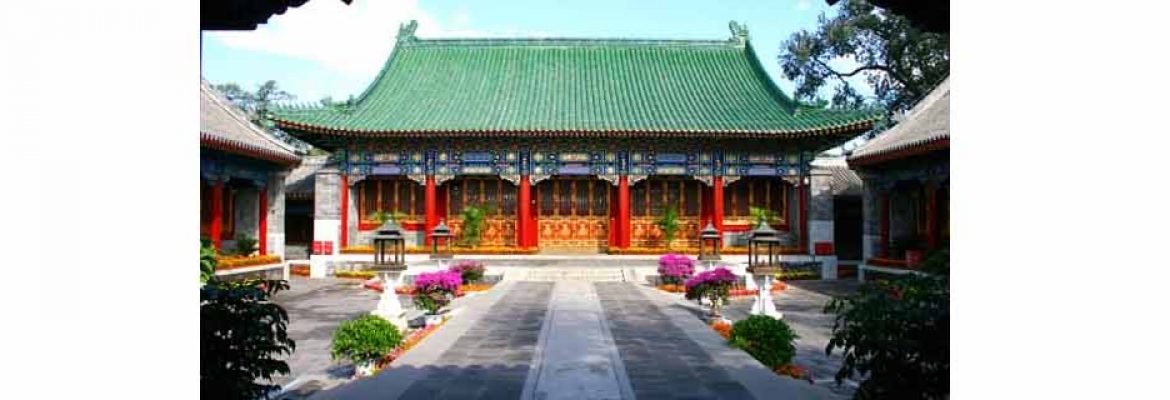Prince Gongs Mansion
This grand, well-preserved 1777 mansion with courtyards & gardens now houses a museum.. Prince Gong’s Mansion is located on the north bank of Shichahai, No.17, Qianhai Xijie, Xicheng District. It is the biggest quadrangle in the world and now it is the best preserved of the more than sixty princely mansions of the Qing Dynasty. It was once the residence of He Shen, a favorite court official during the reign of Emperor Qianlong.
As soon as Emperor Qianlong died, He Shen was put into prison and sentenced to death for his corruption by Emperor Jiaqing, the successor of Emperor Qianlong. Thus, his residence was confiscated, and afterwards, in 1851, Emperor Xianfeng gifted it to his sixth young brother Yixin, Prince Gong. Therefore, the residence got its name – Prince Gong’s Mansion.
The mansion consists of the residence area and the garden area. The residence covers an area of 3.2 hectares and the buildings are magnificent. In the center is the main hall, rear hall and a two-storey verandah building with about 40 rooms. In the east and west, three courtyards respectively are parallel to the center. The wonderful and elegant garden occupies 2.9 hectares, and is divided into the central, eastern and western parts.
Prince Gong’s Mansion, aka Prince Kung’s Mansion, also known as Gong Wang Fu in Chinese, is Beijing’s largest and the best preserved Qing Dynasty (1644-1911) princely mansion and is located at Qianhai Xijie to the north of Shichahai. This fine example of ancient Chinese architecture with its cultural connotations is important not only for its aesthetic value but as an asset to those who wish to study the lifestyle of the privileged classes in the feudal society of a bygone era; it also has an interesting history.
The mansion was constructed around the year 1777 and was originally the private residence of Heshen. A member of the imperial guard, the handsome and intelligent twenty-five year old Heshen came to the attention of the Qing Dynasty Emperor Qianlong (1736-1796). Before long Heshen was promoted to positions normally occupied by the most experienced officials, including those controlling finance and the appointment of civil servants; thus enabling him to acquire great wealth. The aging Qianlong did nothing to curb Heshen’s corruption but his successor, Emperor Jiaqing (1796-1820), had Heshen executed and his property, which was assessed at over 800 million ounces of silver, was confiscated. The mansion was passed to Prince Qing in 1799. Eventually Emperor Xianfeng (1851-1862) transferred the ownership to Prince Gong and it is his name that was to become that of the mansion.
The living quarters stand within three sets of courtyards occupying a central, eastern and western situation. The main, central section comprises the major hall, a rear hall and an extended pavilion that has some 40 rooms. The construction and materials used are similar to those of the Ningshougong (Palace of Tranquil Longevity) in the Forbidden City. Each of the western and eastern sections contains three smaller courtyards. These grand and exquisite buildings are a poignant reminder of the pageantry and splendor that was so much part of China’s imperial past.The dwelling is a traditional courtyard mansion of a style that was so popular in imperial Beijing. The complex covers a total area of 60,000 square meters (14.9 acres). Just over half of the Prince Gong Mansion is the residential portion, while the remainder is devoted to an ornamental garden to the rear.
The garden, surrounded by artificial mountains, is known as Jincui Yuan, and is of high standing on account of its layout and distinct design. It covers an area of 28,000 square meters (6.9 acres) and includes twenty scenic spots, each widely different from the others. The entrance via a cavern brings you into a spacious yard. A high but graceful rockery at the center point greets you. There are mountain peaks, ponds, caves, studies and pavilions distributed throughout the garden. The ‘Western-Style Gate,’ the ‘Grand Theater House’ and the ‘fu’ Stele to be found in the garden are referred to as the ‘Three Uniqueness in the Prince Gong’s Mansion’.


